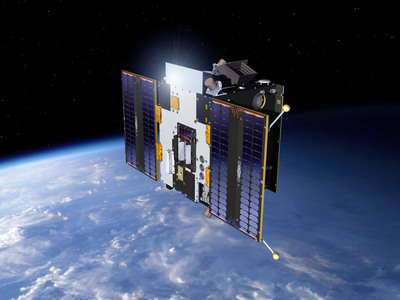PROBA2’s EUV Imager for Solar Corona Detection
8th Jun, 2021

PROBA2’s EUV Imager using P43 Scintillator coating Supplied by Scintacor
The PROBA2 Science Center, located at the Royal Observatory of Belgium in Brussels, oversees scientific operations and data processing for ESA’s PROBA2 spacecraft.PROBA2 is a small ESA satellite with a scientific mission to explore the activity of the Sun and its effect on the near-earth environment and a broader mission to provide a test platform for new instrument and platform technology.
The SWAP telescope (Sun Watcher using Active Pixel System detector and Image Processing) has been developed as part of the PROBA2 payload. SWAP is directly derived from the concept of the EIT telescope that was developed in the ’90s for the SOHO mission. The SWAP instrument is funded by the Belgian Space Policy office and flying on the ESA satellite PROBA2, and was built by a consortium led by the Centre Spatial de Liège (B) and is operated by the Royal Observatory of Belgium.
Movie over 27 days ( A Carrington rotation ) showing Solar Activity
SWAP provides images of the solar corona at about 17.4 nm, a bandpass that corresponds to a temperature of roughly 1 million degrees, with a cadence of 1 image per 1-2 minutes, and field of view (FOV) of 54 arcmin. The Sun’s corona is the outermost part of the Sun’s atmosphere. The corona is usually hidden by the bright light of the Sun’s surface. That makes it difficult to see without using special instruments.) Several major innovations have been introduced in the design of the instrument in order to be compliant with the requirements of the PROBA2 micro-satellite: compactness, with a new off-axis optical design, radiation resistance with a new CMOS-APS detector, a very low power electronics, an a thermal opto-mechanical system, optimized onboard compression schemes combined with prioritization of collected data, autonomy with automatic triggering of observation and off-pointing procedures in case of solar event occurrence.
All these new features result from the low resource requirements (power, mass, telemetry) of the mini-satellite, but also take advantage of the specificities of a modern technological platform, such as quick pointing agility, new powerful on-board processor, Packetwire interface, and autonomous operations.
Properties of the CMOS APS Detector
The CMOS ‘active pixel sensor’ (APS) detector has been developed as an alternative for CCD detectors in high-resolution, efficient digital X-ray and EUV imaging. In general, the use of CMOS technology offers several advantages over CCD technology:
-
- Every pixel can be read out separately so no shutter is needed,
- The power supply needed for a CMOS detector is negligible. This is important for SWAP since there are only 5 Watts available for the whole instrument,
- Camera-on-chip integration (camera control and interface logic is integrated on the chip).
The use of ‘active pixels’ largely optimizes the image quality which was – in the past – much lower in CMOS detectors than for CCD cameras. The integration of the amplifier inside the pixel results in low noise and a high light-to-voltage conversion gain. The usual drawbacks of this approach, a low photon-charge conversion and pixel non-uniformities or fixed pattern noise, are eliminated in the SWAP detector by using a pixel structure with a high fill factor and a compensation circuit for fixed pattern noise.
P43 Scintillator coating Supplied by Scintacor
The Scintacor scintillator layer on top of the CMOS detector consists of the phosphor called “P43” which converts EUV radiation to visible light by the process of scintillation. The incoming radiation is absorbed (in this case EUV radiation at 17.5 nm) and light of a longer wavelength (visible light at 545 nm) is re-emitted, releasing the previously absorbed energy. The re-emitted visible radiation can then be detected by the active pixels of the CMOS detector. P43, the specific scintillator coating used in the SWAP detector, is a phosphor made of the host material Gd2O2S doped with Tb.
Find out more about Scintacors range of scintillators from Scintacor or contact our sales team to discuss your requirements
Live updates from Proba 2 Science Center.
Reference papers for SWAP:
-
Reference papers for SWAP:
- Seaton et al. 2013, “The SWAP EUV Imaging Telescope Part I: Instrument Overview and Pre-Flight Testing”, Solar Physics.
- Halain et al. 2013, “The SWAP EUV Imaging Telescope. Part II: In-flight Performance and Calibration”, Solar Physics
Reference papers for LYRA:
- Hochedez et al. 2006, Advances in Space Research, Volume 37, Issue 2, p. 303-312
- Dominique et al. 2013, “The LYRA Instrument Onboard PROBA2: Description and In-Flight Performance”, Solar Physics, Volume 286, Issue 1, p. 21-42
